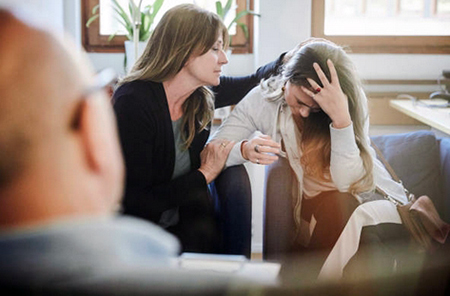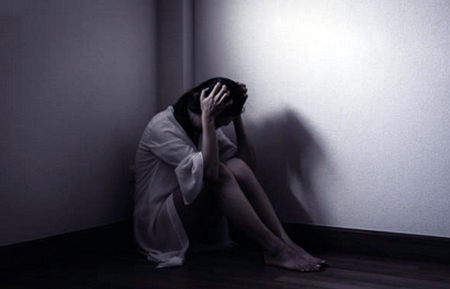Different types of depression: symptoms, causes, treatment


The concept of "depression" implies the complex of depressive disorders. It indicates a serious violation of a person's activity and a decrease in their interest in the surrounding world and their own life. Determining the exact cause of depression can be difficult because several factors may be involved: hereditary, physiological, neurological, and psychosocial. It is possible to make an accurate diagnosis after studying the patient's history. The course of treatment involves a combination of several methods at once: conservative (drug therapy), psychotherapeutic and non-conservative measures.
How to distinguish depression from a bad mood?
The classification of depression according to the current edition of the Mental Disorders Guide is divided into the following groups:

- Major depressive disorder;
- Chronic depressive disorder;
- Depressive disorder with a specified or unspecified etiology (cause): premenstrual disorders, depression due to health disorders, the consequences of taking psychoactive drugs.
Most cases of depression have a clear age link: adolescence or the age of 20-30. Due to the peculiarities of the psyche, women are more prone to depressive manifestations, the exact reasons for this phenomenon have not yet been established. Some depressive symptoms occur in 30% of patients seeking medical help. And only less than 10% of those who applied have signs of deep depression that require competent medical intervention.
The state of demoralization associated with unpleasant incidents in the patient's life is significantly different from clinical depression. There are a number of characteristic signs indicating temporary psycho-emotional difficulties that disappear within a few days without specific treatment.
The differences between depressive disorder and demoralization (transient bad mood associated with a negative event):
If the patient is prone to depressive states, in demoralization, individual signs of major depression may be observed. But even they do not allow talking about a disease requiring immediate help.
Causes of depressive conditions
Experts associate the manifestations of depression with environmental factors and genetic predisposition. However, they invariably indicate the impossibility of accurately identifying the cause of the disease. Official medicine recognizes the hereditary trace in more than half of the diagnosed cases: in first-line relatives, identical twins. According to widespread theories, the development of a depressive state can be affected by disruptions in the work of the hypothalamus, pituitary or adrenal glands, which produce hormones important for humans. Violations in the interaction of these organs can cause protracted depressive states.

A significant role in the appearance of signs of major or chronic depression is played by a psycho-emotional state, disturbed as a result of past problems: divorce, loss of a loved one, financial losses, and so on. In the absence of a predisposition to severe mental disorders, these events do not cause prolonged depressive states. If the patient is prone to anxiety, the risk of developing dangerous symptoms increases.
Speaking about women's predisposition to depression, experts highlight the following reasons:
- Exposure to daily stress due to high mental loads;
- High risk of thyroid dysfunction;
- Hormonal changes associated with the menstrual cycle or menopause;
- Increased level of monoamine oxidase - an enzyme that promotes the destruction of neurotransmitters that determine the patient's mood level.
With of clinical depression, the patient may show signs of somatic diseases: hormonal disorders, brain tumors, strokes, multiple sclerosis, and Parkinson's disease.
Symptoms of depression
Signs of depression largely depend on the nature of the disease and help specialists make an accurate diagnosis.
1. In a state of major depression, the patient has a tired and sad appearance, restrained speech, avoids eye contact, seems emotionless, and is melancholic. The person may have violations of the diet and personal hygiene. The characteristic symptoms of depression also include decreased interest in favorite activities, insomnia, loss or sudden weight gain, indecision, inability to concentrate, obsessive thoughts of death or suicide, lethargy.

2. In chronic depressive disorder, symptoms of the disease are observed for 2 years or more. The patient has anxiety, obvious personality disorders, increased criticality towards oneself and others, withdrawal, and low self-esteem. In addition, increased fatigue, inability to concentrate, feelings of hopelessness, insomnia or excessive sleepiness, weakness, and low mood indicate a chronic condition.
3. In premenstrual depressive disorder in women, a week before the expected start date of the cycle, there are sharp mood swings, anger and irritability, anxiety, and tension. Interest in habitual activity decreases, the concentration of attention decreases, increased fatigue, and feelings of depression are noted. Up to 6% of women of childbearing age suffer from the listed symptoms of depression associated with PMS at different periods of life.
4. In depressive disorders with an unexplained etiology (cause), patients of both sexes have anxious experiences, characteristic manic syndromes (feelings of superiority, talkativeness, or high spirits), decreased emotional response to pleasant events, states of delirium or hallucinations, psychomotor retardation.
The symptomatic picture of different types of depression has an individual color for each patient. However, all people with depression invariably have common features of a particular disease, which makes diagnosis easier.
Complications of depressive conditions
The prolonged course of depression along with patient's refusal from professional help can cause the following dangerous phenomena:
- Enhancement of the depression symptoms severity;
- Increased incidence of depression (recurring episodes of depression);
- Protracted illness, the duration of which increases with the frequency of attacks;
- Cases of double depression, when severe psychological problems are superimposed on more "superficial" experiences resulting in the transformation of depression into a more severe, difficult to treat form;
- Difficulties with the selection of the appropriate therapy, when the disease becomes unsusceptible to classical methods of correction and requires the use of "heavier" drugs with a high risk of side effects.
Diagnosing depression
Treatment of depression is the field of activity of the physician, psychotherapist, and psychiatrist, optimally - their collegial cooperation. To recognize the signs of depression and make an accurate diagnosis allow special questionnaires, complaints of patients and his or her family about characteristic changes in well-being and mood. In communicating personally with the patient, the doctor specifies the duration of the course of the disease, and also delicately clarifies the presence or absence of possible thoughts about causing harm to himself/herself or to other people. Also, concomitant pathological conditions are subject to compulsory study: a tendency to use alcohol and drugs, smoking, compulsive eating disorder, etc.
Differential diagnosis of depression is of great importance to distinguish this disease from other similar mental pathologies: bipolar disorder, anxiety, demoralization, signs of dementia, or hormonal disorders associated with thyroid dysfunction. At the same time, a number of clinical examinations are carried out: a complete blood count, measurement of the level of thyroid hormones, electrolyte balance, the content of prohibited psychotropic substances in the blood.
Treatment methods
Treatment of depression includes:

- Drug treatment is chosen taking into account the patient's condition, reaction to previous courses and the risk of side effects. The drugs of the different antidepressant groups (for instance, tricyclic antidepressants such as Clomipramine, selective serotonin reuptake inhibitors such as Paroxetine, monoamine oxidase inhibitors such as Selegiline, and others) suppress the action of certain hormones that contribute to the development of depressive conditions and restore the hormonal balance in the body.
- Supportive treatment implies a regular visit to a specialist to monitor the results of treatment, adjust the chosen course, obtain necessary explanations, etc.
- Additional methods of influence: psychotherapy, phototherapy, electroshock therapy, methods of deep brain stimulation, etc.
With the observance of all the recommendations of a specialist and full completion of the therapeutic course, stable positive results can be achieved within several weeks, while reducing the risk of recurrence of depressive conditions.
Frequently asked questions about depression
How to get rid of depression on your own?
Attempts to deal with depression on your own usually end in failure and result in the worsening of the condition. Only an experienced doctor is able to determine the type of disease and select the optimal treatment tactics. Folk remedies, uncontrolled intake of antidepressants "on the advice of friends", withdrawal into oneself - only tighten the knot of the problem and can cause deeper mental disorders with a simultaneous deterioration in physical health.
Why is depression dangerous?

Voluntary refusal from the course of treatment with the intention of overcoming the disease on your own can have the most serious consequences: the appearance of suicidal thoughts, profound mental disorders, seizures, personality degradation in the professional and family terms, the emergence of addiction to alcohol and drugs. It is useless to treat all of these symptoms with conventional symptomatic treatments, and taking strong drugs can cause side effects.
How to beat depression?
It is important to understand that depression is not a temporary deterioration in mood, but a serious mental disorder. And it is possible to cope with it only after undergoing a course of complex treatment with the obligatory intake of prescribed drugs and additional methods of correcting the psychoemotional state. Treatment under the supervision of an experienced specialist can help to completely cope with the disease and reduce the risk of relapse, even when exposed to negative factors.
Post by: Christopher Ames, MD, pshychiatrist, Medibank, Sydney, New South Wales, Australia
(Updated at Apr 14 / 2024)
Anafranil Clomipramine HCI articles:
Some of the trademarks used in this Web Site appear for identification purposes only.
All orders are reviewed by a licensed physician and pharmacist before being dispensed and shipped.
The statements contained herein are not intended to diagnose, treat, cure or prevent disease. The statements are for informational purposes only and is it not meant to replace the services or recommendations of a physician or qualified health care practitioner. If you have questions about the drugs you are taking, check with your doctor, nurse, or pharmacist.

